Reflecting on a Quarter Century of Cattle Country


 BY: ANGELA LOVELL
BY: ANGELA LOVELL
When Karen Emilson arrived at her job interview with a mock-up for a newspaper called it landed her the job as Communications Coordinator with the Manitoba Cattle Producers Association (now known publicly as Manitoba Beef Producers).
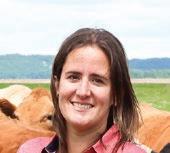
The reason? Her concept perfectly meshed with the what the organization was seeking – someone who could help develop strategies and resources to improve how it communicated with its members across the province.
Emilson, who had plenty of newspaper experience, set to work on the daunting task of creating a new newspaper from scratch.
“Because I had owned a newspaper (the Interlake Echo mailing permit through Canada Post and all the things
you needed to know how to do,” she says. But priority number one was to attract advertisers. For the fi rst Cattle Country edition, which came out in
regular columns.
“People loved it,” Emilson says. “When I went to events, I would take along copies of Cattle Country and

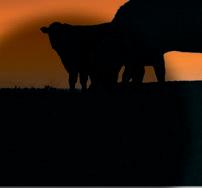

sunrisecu.mb.ca


PUBLISHED
PRODUCERS FEBRUARY 2023
BY MANITOBA BEEF
District 2 director Nancy Howatt snapped this early morning photo of the hoarfrost on her field in the Manitou area. (Photo credit: Nancy Howatt)
SINCE 1998
Sustainability Measures Pay Dividends for Beef Producers

If there was a buzzword from my travels advocating for the beef industry in the last year, it has got to be “sustainable.” While the focus on sustainability is not new to society or our sector, it seems you can’t have a conversation with government representatives, supply chain partners, industry organizations or academics without some reference to the topic.
Sustainability means something a little bit different to everyone, depending on their perspective and focus. But I think for agriculture, the Canadian Roundtable for Sustainable Beef (CRSB) captures it well: “A socially responsible, economically viable and environmentally sound product that priorities the Plant, People, Animals and Progress.”
The Canadian beef industry has been a leader in prioritizing sustainable practices, whether it be through the adoption of rotational grazing practices or more broadly through the start-up of the CRSB and its world-leading certification framework more than a decade ago. Industry leaders recognized that the market was changing and that the best way forward in meeting the demands of the consumer and the growing regulatory climate would be to defi ne and develop our own sustainability metrics. If we did not defi ne what was sustainable in beef, we were letting others defi ne it for us and that was risky.
Over the past year, I have learned of several private sector initiatives that are starting to develop metrics for sustainability for all areas of our economy. An example of this are international financial reporting standards that are adding a sustainability component that will require
TYLER FULTON President’s Column




publicly traded companies to report not only on their own environmental footprint, but also those of their supply chain partners. Financial services are another area that will be impacted, as banks are making commitments to scrutinize and bias their lending practices based on the environmental sustainability of their clients.

But it’s not all being thrust upon us with additional costs and no direct benefits to our farms or ranches. Cargill’s sustainability program pays producers $20/ head for any producer who is Verified Beef Production Plus (VBP+) certified and the animals are always on a CRSB certified operation. In the fi rst few years of the program, there were problems with tracking the animals and proving their eligibility, but I have been involved with an initiative that has been working through some of these issues and I am more confident that the program has improved. For our farm in 2022, we received cheques that represent a payment on about 20% of the animals that we sold, a relatively low percentage, but I note that we have been marketing our cattle on a different program that would not result in them being destined for Cargill.

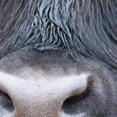

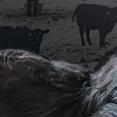
Earlier this year, FCC announced a program for its beef producing clients that provides a credit for being
certified sustainable with CRSB. Our farm has been certified via VBP+ for the last few years, and we utilize a couple of different lending products from FCC and after completing a short application, we received a credit of more than $1,000.
Even without these programs, I have seen value in participating in VBP+, with great online resources and personal support to help ensure that our farm follows better management practices that do change from time to time. Being involved with the program gives me confidence when I am sharing our farm’s practices, especially with those that are not familiar with the beef business. What better way to build public trust?
I encourage all producers to become VBP+ certified as I believe it will help your operation be more profitable and supports our industry’s goal to be known as a leader in sustainability.

Cheers to 25 Years!
The arrival of 2023 brings with it a milestone moment for Cattle Country – 25 years of continuous publication as the newspaper of record for Manitoba’s beef sector.
To celebrate the occasion, we have made the newspaper the news with a fantastic story by long-time contributor Angela Lovell on how it all came to be along with some thoughts on what might be over the horizon.
The 25th anniversary theme will also continue throughout the year.
In addition to our regular news and columns, in selected articles there will be an embedded QR code that will take you Beyond Cattle Country with additional video content. Simply open the camera app on your smartphone or tablet and point it at the QR code and then tap the pop-up banner.
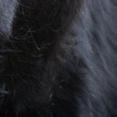
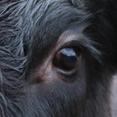
We will also be digging deep into the Cattle Country archives to unearth some of the best content we have ever published. These highlights will be available on the Manitoba Beef Producers social media channels each Thursday beginning February 2.

If you don’t already follow us, please search out @ManitobaBeef (on Twitter), ManitobaBeefProducers1 (on Facebook) and manitobabeef (on Instagram).
No matter if you are a long-time supporter of the paper or you just recently found us, thanks for reading The Voice of Manitoba’s Beef Industry David Hultin, editor


DISTRIC T 1 ALFRED EPP

Boissevain-Morton, Brenda-Waskada, Grassland, Deloraine-Winchester, and Two Borders
DISTRIC T 2
NANCY HOWATT

Argyle, Cartwright-Roblin, KillarneyTurtle Mountain, Lorne, Louise, Pembina, and Prairie Lakes
DISTRIC T 3
ANDRE STEPPLER
Cartier, Du erin, Grey, MacDonald, Portage la Prairie, Rhineland, Roland, Stanley, Thompson, Montcalm, Morris, and Ritchot

DISTRIC T 4

VACANT De Salaberry, Emerson-Franklin, Hanover, La Broquerie, Piney and Stuartburn, Montcalm, Morris, Ritchot, Spring eld, Ste. Anne, Taché, R.M. of Piney and Reynolds
DISTRIC T 5 STEVEN MANNS
Cornwallis, Elton, Norfolk-Treherne, North Norfolk, Oakland-Wawanesa, Glenboro-South Cypress, and Victoria
DISTRIC T 6
VACANT

Pipestone, Riverdale, Sifton, Souris-Glenwood, Wallace-Woodworth, and Whitehead

DISTRIC T 7
T YLER FULTON PRESIDENT
Ellice-Archie, Hamiota, Prairie-View, Riding Mountain West, Rossburn, Russell-Binscarth, and Yellowhead
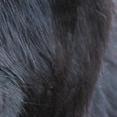
DISTRIC T 8 MATTHEW ATKINSON
Clanwilliam-Erickson, Glenella-Lansdowne, Harrison-Park, Minto-Odanah, Oakview, North Cypress-Langford, Rosedale, and West Lake-Gladstone
DISTRIC T 9 TREVOR SUND
Alexander, Brokenhead, East St. Paul, Lac Du Bonnet, Rockwood, Rosser, St. Andrews, St. Clements, St. Francois Xavier, West St. Paul, Whitemouth, Woodlands, LGD of


DISTRIC T 13
MARY PAZIUK Dauphin, Ethelbert, Gilbert Plains, Grandview, Roblin and Mossey River
2 CATTLE COUNTRY February 2023 www.mbbeef.ca
COMMUNICATIONS AND MARKETING LEAD David Hultin RESEARCH AND EXTENSION SPECIALIST Melissa Atchison D ES IGNE D B Y Print Studio One C AT T L E CO U N TR Y E D I TO R David Hultin LIVESTOCK PREDATION PRE VENTION PROJEC T COORDINATOR Ray Bittner O F FIC E A SS I S TA N T Jennifer Patryluk FINANC E Deb Walger DISTRIC T 14 DALE
Minitonas-Bowsman, Mountain, and Swan Valley West MA NI TOB A BE E F PROD U C E R S Ph: 1-800-772-0458 Un i t 220, 530 Ce n t u r y S t ree t Wi nn ipe g, MB R 3H 0Y 4 PH - (204) 772-4542 FX - (204) 774-3264 info@mbbeef ca www.mbbeef ca Carson Callum GEN E RA L M AN AG E R
CAZAKOFF
Anne,
DISTRIC T 10 MIKE DUGUID SECRETARY Armstrong, Bifrost-Riverton,
DISTRIC T 11 ARVID NOTT VEIT Coldwell,
St. Laurent,
DISTRIC T 12 MARK GOOD TREASURER Alonsa, Lakeshore, McCreary, and Ste. Rose Maureen Cousins POLI C Y AN A LY S T 2ND
Pinawa, Reynolds, Spring eld,
Ste.
and Taché
Fisher, and Gimli
Grahamdale,
and West Interlake
YOU WITH YOUR BEEF PRODUCTION GOALS.
1-866-626-3933 grandvalley.com Advanced Animal Nutrition for Improved Human Health.
HELPING
Grand Valley Fortifiers has a complete line of products to suit your beef cattle needs. From high quality, palatable premixes, creep feeds and grower-finisher feeds, speak with your GVF Beef Specialist and let us help you select the right products to maximize your beef production. GVF offers on farm consultation with regular service and support to ensure that your herd is performing to its maximum potential.
A Busy and Productive Start to the New Year



Greetings all. I hope you all were able to have some time with family and friends over the holiday season. It’s always a great time of year to slow down and reflect on the positives and negatives throughout the production year as we plan for the next one.
Although 2022 had its challenges, such as the spring storms, I am optimistic looking ahead to 2023. I know a major hurdle in many sectors right now is rising input costs. Th is is especially a challenge in the beef sector, as our commodity’s price has not kept pace as well as other commodity prices have. However, with the strong demand for beef and the tight supply due to many challenges (in North America in particular), market signals are favourable for increased cattle prices moving ahead in 2023.

During the fi rst week of 2023, MBP put on two great extension workshops at Manitoba Beef & Forage
 CARSON CALLUM General Manager’s Column
CARSON CALLUM General Manager’s Column
Initiatives’ (MBFI) Brookdale site and Eriksdale that included hands-on demonstrations around potential calving challenges. Th is was done through the use of Clover the cow, a life-sized Hereford Dystocia Simulator which is a great teaching tool. I greatly thank Melissa Atchison, MBP’s Research and Extension Specialist for coming up with the idea for producer-focused events like this. Thanks to all our team at the office for organizing it. Thanks to 4-H Manitoba for the use of Clover. Thanks to Dr. Mary-Jane Orr and the team at MBFI for
the use of their top notch facility and for transporting Clover for use at the Eriksdale workshop. Thanks to Dr. Roger Richard for leading the workshops. Thanks to Boehringer Ingelheim for sponsoring the Eriksdale event. Thanks to Komfort Kitchen of Brandon and Eriksdale Museum Board for catering services. Thanks to the Eriksdale Recreation Centre for hosting the second workshop. Finally, thanks to MBP District 10 director Mike Duguid for helping to organize the Eriksdale event and for participating in it. We are looking forward to hosting future extension events like these in 2023.
I want to welcome Dale Cazakoff of the Durban area to the board of directors as our District 14 director. Dale comes to the board with a great deal of experience in the beef industry and the energy sector. He will be a welcome addition to the team.


Another piece of good news on the MBP team is our Food Expert Anna Borys’ recent achievement. She has received her Red Seal Chef certification. Th is is a very high level of distinction in the culinary world. It has been wonderful having Anna represent the beef sector on Great Tastes of Manitoba and at other human nutrition focused events. Th is added level of certification really adds to her creditability in that space. Wonderful job Anna, congratulations!
MBP welcomed Dale Cazakoff as the District 14 director effective January 1, 2023. Dale was involved in the mining industry for 30 years with a passion for livestock the entire time. It’s been three years now since he retired from mining and became a full-time rancher in Swan River Valley. (Photo credit: Dale Cazakoff )
Finally, by the time you are reading this, we could be close to our 44th AGM on February 2-3 in Winnipeg at the Victoria Inn. I hope many of you can make it out to this fi rst in person AGM since 2020. We have lots of great speakers lined up and a fun night planned during the President’s Banquet. If you are reading this after the event, I greatly thank all who took time to make It out and engaged with MBP and peers in the sector.
We are looking forward to a positive and productive year. The beef sector is a leader in many areas, and we will continue to push its benefits within industry, to governments, and to the general public.

Carl Block
3 CATTLE COUNTRY February 2023 www.mbbeef.ca
On January 4 & 6 MBP hosted two sold-out calving workshops at the Manitoba Beef and Forage Initiatives Brookdale farm along with the Eriksdale Recreation Centre. Each workshop featured demonstrations on dealing with various calving issues via hands on learning with coaching from Dr. Roger Richard, DVM using Clover the model cow. Thank you to MBFI for hosting, 4-H Manitoba for the use of Clover, Dr. Richard for sharing his knowledge and expertise, along with Boehringer Ingelheim for sponsoring our Eriksdale location. (Photo credit: Melissa Atchison).
In 1997, a year before CCIA was formed, a group of producers, consultants and business experts, led by the late Carl Block began to lay the groundwork for an agency that would blaze the trail
to
traceability.
“ “
Carl, a well-known Saskatchewan cattle producer, was named board chair of the fledgling Canadian Cattle Identification Agency and he was joined by others with a stake in the game. Built by industry for industry – the legacy of CCIA’s earliest pioneers continues today. To learn more about our proud history and the people who roll up their sleeves for animal health and food safety, visit canadaid.ca.
CANADA’S TRACEABILITY PIONEERS
MBP Scholarship Recipients
What the beef industry means to my family, my community and Manitoba
HANNAH DERKSEN
It does not take an expert to spot the benefits of the beef industry at all levels in our world, from its impact on personal growth to its economic power, and everything in between.
I was not lucky enough to grow up on a beef farm like many other young producers, but I believe this has allowed me to develop a true passion for the industry as an onlooker, from the outside in, first. For me, participating in this great industry was a choice I had to actively make and pursue, and I wouldn’t have it any other way. Growing up, I was fortunate enough to have an uncle who exhibited a tangible love for raising cattle and found joy in showing others his lifestyle. This is where my first exposure to the beef industry was, and those early steps eventually led to me starting my own herd while pursuing and entering veterinary school. Cattle are the world to my uncle, and while working alongside him wasn’t always easy, it didn’t take long before I could see why. There is nothing better than watching the cattle you truly care for grow and mature after the countless hours of hard work you put in to ensure that they succeed.
HARLEIGH CARLSON


I have grown up within the beef industry and the 4-H community my whole life as my family and I operate Up the Creek Cattle Company Ltd. We breed and raise purebred Shorthorns that we also show at various shows across the province of Manitoba. Growing up on the farm has taught me many very important skills and life lessons. It has also started and fueled my passion for ag education.
I bought three ewe lambs in the fall of 2018, to go in a Mobile Educational Livestock Display (MELD) that my sister, Taylor, and I created to educate people who live in urban areas about where their food comes from. This display was part of the pilot year of a new program being offered at school called STRIVE (Self Taught Real-World Independent Valuable Experience). The goal of the project was to take a topic/idea that you are passionate about and create a project based on a school curriculum. My sister and I received an entrepreneur business credit from this project.
Every time we presented our display, we brought: a bull, a steer, a heifer, a cow/calf pair, two pigs, two sheep, and two goats. We went to three schools and three fairs in 2019. On average, we saw one thousand
SYDNEY GERELUS
The beef industry is not just an industry with the sole purpose of making money. It is an industry filled with passionate and hardworking producers who dedicate themselves daily to raising their cattle and producing top quality beef in an efficient and environmentally friendly way for those around us to consume. The beef industry is, without a doubt, of huge importance to my family. Being raised on my family’s beef and grain farm has shown me firsthand the passion and dedication that beef producers have for their operations and the animals they are raising. Over the years I have become accustomed to the early mornings and late nights that come along with this lifestyle and have grown to enjoy the hard work we put in daily despite all the setbacks and complications that come our way. As a family in this industry we are able to work alongside one another to care for and raise our animals. Although working with cattle may not always be the easiest job in the world, there are not many other lifestyles that allow you to go to work every day with your family beside you. It brings us all great pride to know that the animals we raised will provide for others.
As a vet student, I have had the privilege to work with many beef producers in the area, which has given me a unique perspective regarding their impact on our community. From this, it has become apparent to me that they are the community. They not only support each other through the ups and downs, but are always willing to lend a helping hand to those in the area, whether it be in the form of donations, physical labour or volunteer time. It is inspiring to see them battling through the tough years they encounter together, while still having the graciousness to help their neighbours. These producers also provide jobs to those in the community and teach them the work ethic, determination and tenacity that is needed to succeed in this industry. Some of these employees may go on to other jobs in the area, but with these traits they will continue to build up our community, contributing in a positive way.
Many of these communities make up the patchwork of the vast Manitoba prairies and are largely responsible for keeping our natural grasslands healthy and flourishing. Through responsible grazing, beef producers have the unique opportunity to preserve the beautiful landscape of Manitoba, while contrib-
people per day. When we went to the schools, we arrived early enough so that we could set up before the kids got there and stayed until they were all gone. While there, we tailored individual discussions and topics based on the age of the children. When parents came to pick students up, the kids dragged their parents over to see the animals. We had just as many conversations with parents as we did with kids. This was such an amazing opportunity to bring ag education to urban children; I hope to continue to do this in the future. I have also helped present to Early Years classrooms through the amazing Ag in the Classroom-Manitoba programs as a volunteer.
Bringing our display into different communities allows people to reconnect with farming. We’ve seen many times parents telling their kids about their grandparents’ farms, especially at the fairs. In past years, we have brought cattle for the Manitoba Beef Producers to use in their displays at the Royal Manitoba Winter Fair and the Red River Exhibition. We were happy to do that because we were able to start to build the farm-to-table connection between the children and their families.
To me, this industry relies on the 4-H organization to raise the next generation of beef producers.
Growing up in the Shoal Lake area, agriculture is all around and it is not uncommon to run into other local producers who never hesitate to say hello and chat about the ever changing industry in which we belong. Being a small farming community, many businesses rely on the beef industry and the producers in it.
Whether it is the equipment dealerships, the veterinary clinic or feed suppliers, they all provide for our industry and in return we support them. This is a prime example of how small agriculture communities, like Shoal Lake, have local producers working with businesses to reach both of their goals. The beef industry has helped create many jobs in my community and I was grateful to have spent almost two years working at the local veterinary clinic.
As one of the top beef producing provinces in the country, it is obvious that the beef industry is crucial to Manitoba and its economy. Our province is a major supplier to Canada’s beef industry as a whole which shows how much work is put in by producers and others in the industry. The industry is also responsible for many employment opportunities within the province due to the vast amount of services needed to be as successful as it is.
uting to one of the most powerful carbon sinks. With a push towards regenerative agriculture in recent years, cattle farmers already have a head start thanks to our powerful energy converting fertilizers. Beyond this, the beef industry contributes to our province’s economy due to the commitment producers have to raising healthy high quality beef to enter our food supply.
It is clear that the beef industry is a special one, with the power to bring families closer together, foster community, impact our ecosystems and fuel our economy. I don’t know another industry where all this is so easily possible, and I’m as equally glad to be a part of it, as I am thankful to those who make it up.
Most of my involvement in the beef industry has been through 4-H. I have been able to build connections with people all over the province. 4-H has taught myself many skills that are very useful as a producer. For example, some of the skills I used in college and will use after I graduate are: evaluating/judging cattle, feeding and caring for stock, and how to communicate with others and run meetings.

In the end, I would not be the same person I am today without the beef industry. I wouldn’t have as many connections, life skills or my passion for ag education.
Being a part of the beef industry and lifestyle has shaped me into the individual I am today and has definitely influenced my strong passion for animals and agriculture. My time spent working with our cattle and on our farm has taught me many valuable lessons and skills that I will use throughout my life. I consider myself lucky to have been raised as a part of this industry and to have had the opportunity to experience what it truly means to be a beef producer.
4 CATTLE COUNTRY February 2023 www.mbbeef.ca
LAINIE MUIR

In 2019 there were 1,080 000 head of cattle on 6,465 farms (Manitoba Agriculture and Resource Development) in Manitoba. Our province ranks third in beef production, home to 11% of Canada’s national population. I will move behind the scenes of the industry’s social responsibility, environmental influence and economic viability in the province and focus on an aspect of the beef industry that may not receive as much attention. That is, some of the most significant effects the industry has on those who are at the root of it all; the producers. Beef production provides a sense of community, appreciation and purpose for those who choose to pursue it as their profession.

Beef producers face a lot of the same challenges. The successes, and upsets, producers experience are a reflection of fluctuations in the market, climate, land and feed availability. The challenges of the last few years are no secret. My community has seen our land swarmed with grasshoppers, buried in snow and engulfed by water. Meaningful connections are built between cattle farmers when we share how the same challenges have impacted our lives. Whether it be calving, drought, foot rot or anything in between you can count on a fellow producer to understand because of their personal experiences. We can all relate to one
another and that creates a secure sense of community throughout the entire province.
In addition to providing a sense of community, the industry gives cattle farmers the ability to appreciate the little things. When you let the herd out to pasture, see calves dashing across a freshly-bedded straw pack or lay some homegrown steaks down on the barbeque you can’t help but feel grateful no matter what life has thrown at you before that moment. In a fast-moving world where little things can be easily overlooked, the presence of beef producers ensures there will always be someone to appreciate the sun, the rain and the green grass.
On top of providing a sense of community and appreciation, the cattle ensure their producers will always serve a purpose. In an industry of uncertainty, the cattle can often be a constant. Not in the sense that they will always stay the same; we all know you can think you’ve seen it all and then you find a heifer on the roof of your barn, but in the sense that as a beef producer you serve a purpose every day. The 24/7 responsibility of managing beef cattle is a blessing more than anything. The life of your livestock and the plants that fuel them are in your hands. The cattle must always be fed. Having a responsibility that remains constant has helped myself and many other cattle producers take things day by day until the hard
times get a little easier.
Manitoba beef production creates a sense of community and purpose, and a reminder to appreciate the little things. It is true that raising beef cattle is a business, producers must put food on the table, but first and foremost it is a way of life. A humble, honourable, and at many times rewarding way of life. Adversity forces cattle producers to simplify their lives and see what is most important. Our province is filled with natural diversity and compassionate, appreciative people. As long as there are cattle farmers we will stay “Friendly Manitoba.”
The beef industry is a vital part of Canada’s growing economy, providing the country with a sustainable source of nourishment and with hundreds of thousands of acres of preserved grassland. Growing up in this industry has allowed me to truly appreciate all that it does for my family, our community, and Manitoba. This industry means everything to my family because it is our passion and way of life, to our community because it is run by the hard-working farming families throughout it, and to Manitoba because it helps to keep our province essential to the trade of Canada.
For my entire life, I have watched as my parents poured their time, energy, and funds into our cattle and grain farm in southern Manitoba. I watched as they checked the cows every two hours through the night for months to ensure that every calf was delivered. I watched as they worked through until sunrise at harvest to be able to feed the cows over the winter. I watched as they got up each and every morning and did it all over again. Through rain, shine, snow, and drought, my parents have put everything into the beef industry, not because they have to farm, but because they love it and are passionate about it. As my sister and I follow in their footsteps and start to invest ourselves into the farm we realize exactly what the beef industry means to us. Everything.
KATE-LEIGH HEAPY

The beef industry is a crucial part of not just my life but the lives of many Manitobans. It is a way of life for a great number of people and a passion of many from the time they are very young. It means more to me than raising an animal from birth; it is caring for an animal that is like a member of my family. My family provides the cattle herd with everything they need to survive and be their best allowing them to produce healthy offspring or feed Canadian citizens. It is important to my family that each animal is cared for and gets the nutrition and necessities necessary to excel.
The entire industry is such an important part of my family’s life because it allows us to do what we love, do it as a family as well as provide a food source to others. My brother, uncle and grandparents are all members of the beef industry and take great pride in doing so. The beef industry allows my extended and immediate family to remain within the same area and live close to one another. It supplies every beef producer with a way of life, a way to help the environment and a way to feed Manitobans.
The beef industry has allowed me to grow, lead, communicate and make lifelong friends through my
Not only do my parents care deeply about the beef industry, but so does our community, the municipality of North Norfolk. Being a community that is filled largely with grain and cattle operations, the community centres many of their efforts on the farmers that keep the community running. My community appreciates the work that the farmers do from fundraisers to school tours to community events, the beef industry is in every part of our way of life in North Norfolk. The beef industry means a source of sustainability in the community and also a source of pride towards the hard work of the farming community.
The beef industry is also extremely important to Manitoba because it is one of the agricultural products that helps to keep Manitoba relevant for exporting beef in Canada. Manitoba is the third largest beef producing province in Canada with about 12% of the national beef herd that reside on the vast grasslands in the summer and kept healthy on feed in the cold winters. Without the beef industry, Manitoba would have to import beef from neighbouring provinces, which would increase the cost of beef upon the fast-rising inflation rates, making it less affordable for Manitobans to purchase the protein they require.
Overall, Manitoba needs the beef industry to remain a province of strong trade power to the rest of Canada and the rest of the world.
Not only is the beef industry extremely important to my family, my community, and Manitoba, but it is
involvement in beef 4-H. My family is incorporating beef bulls into our dairy herd as well in the last few years. We are breeding heifers and cows with fertility problems to beef bulls. The result is getting them in calf to produce milk. The male calves are sold as steers and are producing beef for Manitobans.
The beef industry is an integral part of my community. My community would not exist without agriculture and the beef industry. There is an abattoir in my community where beef producers take their finished livestock to be butchered. Without the beef industry, the local co-op, credit union, gas station and mechanic shop would no longer be viable. The beef industry is allowing farmers to support all the local establishments and provide them business. Since my community is made up of many beef producers, not having their support would be detrimental. My community is based on and around Manitoba beef producers.
The beef industry within Manitoba is a huge part of our province. So many Manitobans, whether they are farmers producing the beef or buying it in a store, it is important. It produces food for Manitobans to eat and allows people to do what they love daily. The beef industry is such an important part of the economy as well with Manitoba producing the third most amount of beef in Canada.
also important to me. One of the greatest honours in my life is being a part of the beef industry in Canada, where we are able to feed our families, neighbours, and the world. For this reason, I love being involved in and advocating for the beef industry every single day. I also enjoy the people that so graciously devote their time, energy, and money into this industry as well. Last but not least, I love the beef industry because of the animals. From showing cattle, I have been able to learn to appreciate the gentleness of tamed cattle and love working with them every day.
The beef industry is so important to my family, my community, and Manitoba in so many ways. It gives families a way of life, a chance to do what they love day in and day out. Beef producers can raise kids who know how to care for, love an animal and have a strong work ethic!
I love the agriculture industry as a whole; from checking cows to calve in -40 to milking cows on a +35 summer’s day. I am passionate about the industry and love being out all day with the animals; it gives me a feeling of purpose. I would not change a day in my life spent in the agriculture industry and am so excited for my future in the agriculture industry. It has instilled so many life qualities within myself and I could not be prouder to be a member of agriculture!
5 CATTLE COUNTRY February 2023 www.mbbeef.ca
MEGAN BESWITHERICK
StockTalk Q&A Feature Brought to you by Manitoba Agriculture
 Shawn Cabak Livestock Specialist -Beef Manitoba Agriculture
Shawn Cabak Livestock Specialist -Beef Manitoba Agriculture

shawn.cabak@gov.mb.ca
Question: I have heard annual forages are more moisture efficient than perennial forages. Has any research been done in Manitoba to show which annual crop provides the highest forage yield and quality?
Answer: The Manitoba Crop Variety Evaluation Trials (MCVET) annual forage trials were started last year at four sites; this year there were five sites across the province including Melita, Roblin, Arborg, Carberry and Carman. The objective of the program is to test different varieties of annual crops for forage yield and quality across Manitoba. Th ree replicates of each crop and variety were planted at each site.
Above-average precipitation this year caused some areas of the province to experience over 150 percent of normal precipitation for much of the growing season. To help manage the wet conditions and delayed seeding, livestock producers can grow annual forage crops that can be cut for silage, greenfeed, or used for grazing.
One of the reasons for initiating the annual forage trial is because annual crops are more moisture-efficient than perennial forages. And in wet years, annual forages can be used to help remove moisture from the soil and provide feed when seeded late. For example, corn requires three inches of moisture to produce one tonne of dry matter, versus four inches for barley and over six inches for alfalfa or timothy. As a result, annual crops are still able to yield reasonably well in dry years while perennial forage yields suffer.
Both warm and cool season crops were included in the trials. Warm season crops like sorghum, millet and corn are more drought- and heat-tolerant. Cool season crops such as oats, barley and triticale prefer normal growing conditions that are cooler and wetter. In the annual forage trial, there were three oat varieties, five barley varieties, one spring triticale variety, an oat and pea mixture, a barley and pea mixture, proso and foxtail millet, one sorghum variety and one sorghum-sudangrass variety. In general, the varieties selected for the trials were chosen for their higher grain yield, taller growth, lodging resistance, smooth awns and better disease resistance.
Renovating and fertilizing perennial forages
Younger and properly-fertilized perennial forage stands yield better than older stands that lack fertility. Manitoba Agricultural Services Corporation (MASC) forage insurance coverage is higher for forage stands four years or younger due to their higher yield potential.
In fact, a field of alfalfa less than four years old in risk area 1 (southwest Manitoba) with 80 per cent Select Hay insurance is covered for $339 an acre, while an alfalfa/grass field will be covered at $249 an acre with premiums of $11.24 and $7.87 an acre, respectively.

Renovating and fertilizing perennial forages helps to maintain forage production. Including at least 50 per cent legume in a mix will provide adequate nitrogen to the grass in the stand saving you on fertilizer cost. In 2021 younger, fertilized fields of alfalfa/grass yielded more than four times the number of bales per acre compared to older, unfertilized grass stands.
Seeding a mix of a winter cereal and a spring cereal can be used for grazing in the spring or can be cut for greenfeed or silage. The winter cereal will regrow and can be grazed later in the summer and fall. Fall rye or winter wheat used for grazing has good regrowth and won’t head out the year they are planted. Adding cover crops or Italian rye grass to the cereals will provide more forage for later summer or fall grazing.
Millet and sorghum
Proso millets mature earlier and head out in 50 to 60 days, but are generally lower-yielding than the foxtail millets. Both foxtail and proso millets are suitable for hay,
Keystone livestock
Lois McRae & Joyce Gordon RR 1 Box 57 Brandon, Manitoba R7A 5Y1
h: 204-728-3058














c: 204-573-5192
f: 204-727-7744 marmacfarms1@gmail.com
green feed or silage production, providing good quality feed when cut at the proper stage. Golden german millet is a yellow foxtail millet and heads out in 75 to 90 days. Foxtail millet often has a thicker stem and a waxy surface coating which can slow dry-down time. Weed control options are limited when growing millet or sorghum. Both 2,4-D and MCPA are registered but there are no grassy weed herbicide options. Sorghum has a bigger stock and looks similar to corn, so it is best harvested as a silage. Sorghum and sorghum-sudangrass can accumulate prussic acid, which can be lethal to livestock. Prussic acid will dissipate in cured hay or silage. Based on its tall height, sorghum has very good yield potential. Millet and sorghum should be cut at early- to mid-heading.
Cereals
When producers are dealing with late seeding, crop maturity is important. Oats, on average, requires 96 days to mature for grain; barley needs 88 days, and triticale needs 100 days. There can be up to 3 to 4 days difference in maturity depending on the variety grown. Greenfeed/silage can be cut 10 to14 days earlier than grain. When growing forage for livestock, choose a smooth awned barley, especially for greenfeed. Rough awns can become stuck in livestock mouths; better weed control options exist for cereals. For example, in barley you can spray for both broad leaf and grassy weeds. In the trial, after 51 days planting the barley was headed and both the oats and the proso millet were starting to head out. In wet springs with late planting, you can still seed up until mid-July and have a reasonable expectation to reach maturity for silage/ greenfeed prior to a late September frost with several different crops, but especially proso millet and barley, as they are the earliest maturing options.
Harvesting annual forage crops
Annual crops harvested on a timely basis make excellent quality feed and may be harvested as a greenfeed, chopped silage or baled silage. Advantages of harvesting feed as silage include:
1) lower nitrate levels by 30 to 50 per cent (ensiling decreases nitrate
2) the silage harvest is less weather dependent; and

3) there are less field and storage and weathering losses.
Harvesting cereals for greenfeed or silage at the optimal time will maximize quality and yield. Most annual crops (barley, triticale) should be harvested at early dough stage or late milk (oats) when being cut for forage.
Combining peas and a cereal produces a higher protein feed. If growing peas separately, harvest at pod wrinkle, in a cereal mixture harvest according to the cereal maturity. The 2022 MCVET annual forage trial results, including yield and feed quality information can be found in our Seed Manitoba 2023 Variety Selection and Growers Source Guide. Overall across all five sites on average, sorghum was the highest yielding, followed by oats, triticale, barley, the pea/cereal mix and then millet. Barley had the highest overall relative feed value and energy, and was second for protein. The pea/cereal mix had the highest protein and was second for both relative feed value and energy.
The 2022 trials are sponsored by the Manitoba Crop Variety Evaluation Team (MCVET), Manitoba Seed Growers Association, Manitoba Beef Producers and Manitoba Agriculture. We would like to thank the staff at each of the four Diversification Centers and the University of Manitoba Carman for conducting the trials.

For more information, contact your nearest Manitoba Agriculture office or shawn.cabak@gov.mb.ca or 204-239-3353.
We want to hear from you!
For the next issue of Cattle Country, a Manitoba Agriculture forage or livestock specialist will answer a selected question. Send your questions to Elizabeth.Nernberg@gov.mb.ca.
The StockTalk Q&A Feature for Cattle Country is brought to you by Manitoba Agriculture. We encourage you to email your questions to our department’s forage and livestock team. We are here to help make your cattle operation successful. Contact us today.
Andrea Bertholet Killarney 204-851-6087 Andrea.Bertholet@gov.mb.ca
Kristen Bouchard-Teasdale Beausejour 431-337-1688 Kristen.BouchardTeasdale@gov.mb.ca
Shawn Cabak Portage 204-239-3353 Shawn.Cabak@gov.mb.ca
Pam Iwanchysko Dauphin 204-648-3965 Pamela.Iwanchysko@gov.mb.ca
Cindy Jack Arborg 204-768-0534 Cindy.Jack@gov.mb.ca

Juanita Kopp Beausejour 204-825-4302 Juanita.Kopp@gov.mb.ca
Elizabeth Nernberg Roblin 204-247-0087 Elizabeth.Nernberg@gov.mb.ca
6 CATTLE COUNTRY February 2023 www.mbbeef.ca
specializing in livestock insurance for over 45 years LIVESTOCK INSURANCE
SERVICES






















































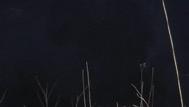







7 CATTLE COUNTRY February 2023 www.mbbeef.ca 2023 bull sales President: Melissa McRae 204-573-9903 Secretary: Laurelly Beswitherick 204-637-2046 b2@inetlink.ca www.mbsimmental.com Feb. 20th Rendezvous Farms 18th Simmental Bull & Female Sale, Ste. Rose du Lac, MB Feb. 26th M&J / Glasman Farms Simmental & Angus 2 Year Bull Sale, Russell, MB Feb. 28th Horner / Downhill / TSN Online Simmental Bull Sale, FarmGateAuctions.ca Mar. 1st Maple Lake Stock Farms Kick off to Spring Bull Sale, Hartney, MB Mar. 2nd JP Cattle Co. Annual Simmental & Angus Bull Sale, Mcauley, MB Mar. 5th Premium Beef Simmental Bull Sale, Kenton, MB Mar. 6th Canadian Central Bull & Female Simmental Sale, Neepawa, MB Mar. 7th Bonchuk Farms Annual Bull Sale, Virden, MB Mar. 8th Mar Mac Farms & Guests Simmental, Red & Black Angus Bull Sale, Brandon, MB Mar. 10th Rainbow River Simmentals 8th Annual Bull & Female Sale, FarmGateAuctions.ca Mar. 11th 83 South Simmental Bull Sale, FarmGateAuctions.ca Mar. 11th Rancher’s Select 4th Annual Simmental Bull Sale, Neepawa, MB Mar. 13th McIntosh Ranch Online Simmental Bull Sale, FarmGateAuctions.ca Mar. 13th Oakview/Perkin/Triple R Simmental Bull Sale, Darlingford, MB Mar. 14th AJB Online Simmental Bull Sale, FarmGateAuctions.ca Mar. 14th Prairie Partners Bull & Female Sale, Killarney, MB Mar. 15th Van De Velde Cattle & Delight Simmentals Online Bull Sale, FarmGateAuctions.ca Mar. 16th Transcon’s Premium Beef Simmental Bull Sale, Neepawa, MB Mar. 17th High Bluff Stock Farms Charolais & Simmental Bull Sale, Inglis, MB Mar. 24th Cattle Capital Bull Sale, McCreary MB check us out at THIS SPRING, USE A LIMOUSIN BULL Get in on what other producers already know to be true TAG THEM LIMO Limousin RFID Tags Available MORE POUNDS = MORE PROFIT Amaglen Limousin 204-246-2312 / 204-823-2286 View bulls and females for sale online at www.amaglenlimousin.ca Campbell Land & Cattle 204-776-2322 Bulls and females available by private treaty on farm and Douglas Bull Test on March 25, 2023 Email cam.limousin@gmail.com Cherway Limousin 204-736-2878 Red and black polled bulls and females for sale www.cherwaylimousin.ca Circle Dot Ranch Wayne Yule 204-383-5390 Yearling Limousin and Limo x Angus bulls for sale on farm selected from 45 years of breeding. Visitors welcome. Diamond T Limousin 204-838-2019 / cell 204-851-0809 2 Year old and Yearling bulls for sale by private treaty on the farm. Email diamondtlimo@gmail.com Hockridge Farms Brad 204-648-6333 Glen 204-648-5222 Bulls for sale on farm www.hockridgefarms.ca L & S Limousin Acres 204-838-2198 Bulls sell March 25, 2023 at Douglas Bull Test Maplehurst Farms Bob 204-274-2490 Bulls for sale on farm and at the Douglas Bull Test, March 25, 2023. Park Performance Limousin Rick 701-340-2517 Breeding stock available private treaty on farm. Calves for sale in fall of 2023 Triple R Limousin Art 204-856-3440 / 204-685-2628 45 2-Year-Old and Yearling bulls available on farm. Limousin, plus Angus and Limo x Angus. Look for fall female sale. MANITOBA LIMOUSIN ~ ASSOCIATION ~ FIND US ON FACEBOOK manitoba_Limousin_Association All bulls sold private treaty off the ranch on a first come basis BLACK ANGUS SEEDSTOCK PUREBRED & COMMERCIAL “Commercially Based Forage Genetics” (204) 773-6800 • Shellmouth, MB NERBASBROSANGUS.COM TREHERNE OFFICE: Kathy Murray (204)871-1569 RESTON OFFICE: Carol Graham (204)821-4943 BOISSEVAIN OFFICE: Tom Moran (204) 305-0276 BRANDON OFFICE: Kasie Cullen (204)724-0583 FOR MORE INFORMATION CALL: MHHC PAYS Landowners to Conserve Wildlife Habitat On Private Lands. Find out more: www.mhhc.mb.ca
Page 1
“Karen’s vision, talent, experience, and extraordinary commitment to the paper was exceptional,” says Audrey Kuik, who became Communications Coordinator in 2009. “She knew her audience well, after all, she was a beef producer herself. The paper was a daunting task, but she always delivered an outstanding end product right from content and advertising, to the management of editorial and production timelines, all the way to her development of key relationships with freelance writers, columnists, photographers and the myriad of others who supplied material to the paper. To have someone of her calibre and skill as a writer, editor and manager of the paper was without a doubt the reason the paper was so credibly regarded and successful, and why it was ultimately so widely received and celebrated in our industry.”
Cattle Country 25 Years
to last 25 years is very satisfying and hopefully it will be around for many years to come,” she says, although she is quick to give credit to the forward-thinking board of directors and staff that were so supportive of the idea at the beginning. They included Blair Olafson, who was President when Cattle Country was launched, and the late Ken Malenko who was a director and enthusiastic volunteer proofreader/fact checker for early issues.
Developing a vision
Wanda McFayden was the newly hired General Manager of MCPA when Cattle Country launched and well remembers the conversations around the Board table about developing a direction and vision for the newspaper.

“The biggest impetus was the fact that it needed to be a publication specifically for beef producers and that belonged to the producers,” she says. “It allowed us as an organization to hone in on provincial, national and international issues that impacted producers on a daily basis, and talk about beef cattle research, so they got a broader knowledge of the industry and made them aware of what was going on outside their own operation and in the supply chain. It was an important way for producers to feel they had ownership of the organization and keep them informed.”
A community newspaper for Manitoba’s beef community

But what makes Cattle Country unique is the fact that it isn’t just a communication vehicle, or a fact sheet of information about issues; it’s a community newspaper for Manitoba’s beef community. It encapsulates the diversity and versatility of the industry by showcasing progressive producers and their practices, sharing new and exciting ways to prepare beef recipes and being a strong advocate for an industry that leads the way in areas of sustainability and stewardship. These are guiding principles that have not changed in 25 years.
In every issue there is something for everyone and there’s no effort needed to find it. You don’t have to log in to your device, stare at a screen or wade through an ever-growing mountain of emails or social media posts to find that article you had meant to read when it first popped up but just didn’t have time to. You can grab Cattle Country off the coffee table, put your feet up with a cup of coffee and pick up the story where you left off before you had to go deliver a calf or move bales around.
“There’s always been a little bit of everything in Cattle Country,” says Maureen Cousins, MBP’s Policy Analyst. “Somebody is going to find something that is of value to them, whether it’s a production tip, an article on a hot-button topic like ag Crown lands, predation, or perhaps a recipe. There may be something that encourages producers to pick up the phone to help advance issues with government, and work towards solutions to help deal with some of the stressors in the sector. It’s got a feel-good piece, an informational piece, an advocacy piece, it’s a lot of different tools wrapped up in one package that gets delivered to producers’ mailboxes.”
A personal touch
As part of the community building process, Emilson believed it was important for producers to have a more personal connection to the directors of their organization, which is why she began the tradition of including profiles of new directors in Cattle Country as they were elected and new staff that came to work for the organization. Emilson would sit down and personally interview the new directors at district meetings, or sometimes at the kitchen table, sharing a meal with their families on their farm.
“I believed it was important that producers got to know not only the director in their area but that directors would get to know each other as well,” she says. “The profiles gave them the opportunity to know the president (if not from their district), the staff and the people involved. The cattle industry is close knit in Manitoba and the idea was to pull together the producers, the organization that was advocating on their behalf, and the business community that was supplying them.”
Emilson is immensely proud that Cattle Country has withstood the test of time. “For something that you start
Issues of the time that were front and centre in many of the first issues included the formation of R-CALF, U.S. border closures, the rollout of the National Identification Program, a bovine tuberculosis outbreak in the Riding Mountain National Park area, and new discussions about the benefits of grazing management and other production practices.
It was also a time when there was no email!
“I would have been delighted to have the email that we have today,” McFayden says. “I was writing up reports and sending out faxes or phoning around to all the auction marts every night for updates, so the paper was a great asset in the sense that we could update producers about what was happening on trade fronts and other areas,” Wanda says. “It was a new tool to help educate our producers; something that they could look to for information that was pertinent and timely. It’s still doing the same job; hitting those important issues and providing more background to the producers out on the landscape.”
Changing with the industry
Martin Unrau, still has every copy of Cattle Country that came out during his time as MCPA president beginning in 2003.
“I was looking at some of those papers the other day and it’s interesting that the issues that we were talking about in 2004 and 2005, like sustainability and making sure our industry flourished are still the things we talk about today,” Unrau says.
Unrau was president during the height of the BSE crisis, and that brought about a tumultuous period where there were constant changes in trade arrangements and markets, and Cattle Country was right there in the thick of it helping producers make sense of it all.
“Most producers at the time weren’t as aware as they are today of the importance of international trade and ensuring the credibility of our product, and I think Cattle Country was, and remains, instrumental in getting those messages across because when our producers understand it, the message gets out to the consumer and we all benefit,” Unrau says
Maureen Cousins also has an archive of Cattle Country papers, and she knows first-hand how oddly, things have changed but also stayed the same over the years. Cousins has worked for the MCPA and MBP on and off since 2004, and has been the Policy Analyst since 2012. She has also done several stints as the organization’s communications coordinator and editor of Cattle Country
Cousins had a baptism by fire when it came to the issues the then-MCPA was dealing with back in the early 2000s such as BSE and U.S. border closures, bovine TB, flooding, the traceability programs getting off the ground and the introduction of RFID tags, changing environmental regulations, and the launch of the Manitoba Cattle Enhancement Council. No wonder Cattle Country had so many pages back then!
“We had a lot of advertisers, and that is perhaps indicative of the size of the industry then versus now,” Cousins says.
www.mbbeef.ca
And the information for those pages, the stories, and the advertisement designs and copy were largely going back and forth by fax.
“Website development hadn’t really taken off yet,” Cousins says. “We were doing a publication eight times a year, so there was a lot of faxing going on. When you look at then versus now, we have had a huge leap forward in terms of communication tools that are out there to supplement Cattle Country. There is social media, the website, blogs and podcasts, it’s a whole different realm, but producers still need that core communication tool, which is Cattle Country. It reaches a broad demographic and gives the ability to lay out information in a user-friendly format to diverse audiences including producers and government officials to help advance our advocacy work.”
From its inception, the people behind Cattle Country have worked hard to make sure it isn’t seen as simply a propaganda piece for the beef industry. They have done a good job because it is certainly seen as a strong advocacy tool for the industry, but also as a balanced and trustworthy information source, with well-researched, in-depth stories and editorials that delve into topics the way other mediums – like social media or even general agricultural publications – aren’t able to.
“How do you get producers worked up about an issue? You explain it in detail in the paper, and suddenly a phone is ringing in an MP’s office,” Cousins says. “It’s that grassroots approach which our sector is wellknown for. We know we’re not always going to agree on everything but Cattle Country is one avenue where we can put out views and encourage engagement, especially at a time when people are becoming increasingly disengaged.”
By 2009, it was time for a change and Audrey Kuik was hired to assist with the development of a new communications strategy. With her extensive background in marketing and design, she was the perfect person to help the organization build a new brand identity for itself; one that would establish it as the recognized and exclusive representative and voice for the beef industry in Manitoba.
This was important at a time when the general public was scrutinizing agriculture in ways they never had before; they had questions about where their food was coming from, who was producing it and how. They had expectations about the environmental impact and sustainability of the food they put on their table and the beef industry, with the rise of digital media, found itself battling against disinformation that was all too
8 CATTLE COUNTRY February 2023
Karen Emilson launched Cattle Country 25 years ago. (Photo credit: Karen Emilson)
Years in and Ready for 25 More
tronic era; not a small achievement.
“Cattle Country remains a highly-trusted media resource amongst industry stakeholders — and that is saying something,” Kuik says. “People want to be able to trust their information sources and the integrity of Cattle Country remains distinguished in that regard. The objective of Cattle Country remains: to create key awareness of issues, relay critical information, insight and understanding of relevant news and/or programming and facilitate the exchange of information by the use and inclusion of local, trusted knowledge and experience. As public trust in the media declines, the quality work of a community-focused paper like Cattle Country may be overlooked or underestimated, but its contribution remains vital.”
Cattle Country is something unique: it’s a paper that is founded, funded and operated by people who live in the community.
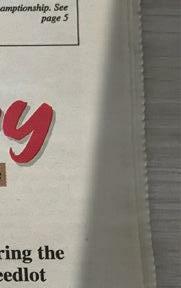
easily spread through social media and other channels.


As Kuik guided the Board and staff through a strategic planning process, it became clear that the organization needed a new name that better reflected who and what it represented and so MCPA became the Manitoba Beef Producers (MBP).

“A critical issue when we were identifying our target audiences, was the urban/rural divide,” Kuik says. “It became clear that there was a more significant change in identifying language that we could make to bridge this divide and fi nd common ground with what the public audience care about. They might not readily understand all the challenges and/or issues of cattle industry, but they certainly love and care about beef. So, a critical and significant part of the new brand identity was a name change from Manitoba Cattle Producers Association to Manitoba Beef Producers.”
Of course, Cattle Country remained a mainstay of the MBP’s communications strategy, but it was time for it to step up and play a new role.
“The establishment of Cattle Country as a long-standing and trusted communication vehicle for the beef industry in Manitoba was already highly successful,” Kuik says. “Our new brand would have to be consistently represented across all the platforms of our marketing mix and so Cattle Country had to reflect that as well. Cattle Country was a legitimate, provincial newspaper and it now needed to consistently reflect the same standards as its print media counterparts in the province, and be fully identified and assimilated with the new brand standards established by Manitoba Beef Producers’ new name and identity.”
Which meant that Cattle Country got a bit of a revamp. The new Cattle Country had a fresh layout, with MBP’s new logo and tagline ‘my farm, your family, our future’ front and centre.
The logo conveyed the three pillars of MBP’s new brand: stewardship, security and sustainability, and the tagline was developed to encompass the benefits of the brand (environmental commitment, social responsibility and economic impact).

































Cattle Country couldn’t have been more at home with this new identity because, for more than a decade its pages had been dedicated to bringing these increasingly important priorities to the fore. The newspaper now had an exciting role to play in telling the positive stories of modern beef production, engaging with the wider public and inspiring a new generation of beef producers to ensure a viable future for the industry.
The future?
By 2016, when Dianne Riding fi rst became an MBP director, the digital era was in full swing. So, what would that mean for a print publication like Cattle Country? Would it go the way of the dodo?

Riding quickly realized that wasn’t likely to happen any time soon because, as she found out, the paper still had a solid, loyal readership.
“As a new director, I was handed a copy of the Cattle Country subscriber list for my district and asked to go through it and remove any producers that I knew were no longer in the cattle industry,” Riding says. “That was eye opening for me because MBP started getting phone calls that their paper wasn’t coming any more. The paper is still delivered to the houses of many past producers, who still want to know what is going on in the industry, and they want that news via Cattle Country.” There may also be a bit of a fallacy that younger people, who are defi nitely at home with their devices, are foreswearing print for good.

“At a district meeting I asked one of the young producers if he had signed up for Cattle Country online, or did he still have it coming to his house,” Riding says. “He said ‘Oh yes, it’s on the cupboard at home; I have only read part of it.’ So, it’s still very valid.”
Kuik also believes that Cattle Country remains highly relevant and holds intrinsic value in our elec-
“Its writers, editors, and contributors spend countless hours researching, investigating and informing us about local issues that have direct impacts to us,” Kuik says. “Never has that been more important. While the perception may be that digital online news is more readily available, the extent of it isn’t keeping up with all Cattle Country provides and encompasses. It does not serve to appease any other interest other than to serve its readership with the same integrity and trusted content through which it has built its reputation.”
Riding says that the joke, for years has been that cattle producers needed to move into the 21st century, but as someone who ranches and lives in rural Manitoba, she knows it’s simply not possible for everyone.
“Because of the lack of good rural internet in many places, producers are not embracing digital as much as they might,” she says. “Younger producers, who have grown up with internet and laptops, embrace that really well, and there was talk that we should go more digital but you have to think about your audience, and that is why we have both print and digital options because the biggest part of our audience is getting there slowly onto the internet and the digital world, but they are never going to be fully there. In the next 10 to 15 years maybe Cattle Country will only be digital, but it will still be there because there are still going to be cattle producers on the landscape, and we will have learned better skills along the way.”
Another 25 years to go?
Today’s Cattle Country isn’t a lot different from that fi rst edition 25 years ago; it still contains interesting stories, editorials and regular columns from industry experts and the current MBP President and General Manager. It promotes new ideas and practices, covers trending issues and ones that are all-too-familiar, bull and purebred sale announcements, advertisements from many companies who have been there from the start, and the odd recipe or two that highlight the diverse options for preparing beef.
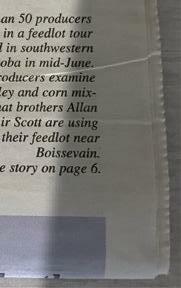
“It’s still an important avenue to get beef-specific information on all topics related to the sector,” says MBP’s current General Manager, Carson Callum. “With it being a publication mailed out to members and subscribers, it provides an ease of read for those who use it and it’s continued in that way because of all the great content that it provides and information to producers of things that are happening within their industry.”
Callum doesn’t see the focus or purpose of Cattle Country changing any time soon, even if the format may one day evolve.
“Our communication efforts to our membership will always be a top priority,” he says. “I think the Cattle Country publication will continue but will likely be tied more into a digital presence in the future. But the Cattle Country brand will stay front and centre, and continue to provide all the valuable information that producers have come to expect from it.”
9 CATTLE COUNTRY February 2023 www.mbbeef.ca
that 21
Growing a More Complete Winter Ration: Corn Intercropping in Western Canada
BY E.J. MCGEOUGH AND Y. LAWLEY, UNIVERSITY OF MANITOBA
Finding innovative ways to extend the grazing season in western Canada continues to be at the forefront of winter feeding for many cow-calf producers, particularly when challenged to “get more from less” from available lands for cattle grazing and feed production.
When it comes to extended grazing, corn offers many benefits. Plant breeding and research breakthroughs in the development of short season varieties over the past 10 years have allowed us to grow more corn per hectare than ever before in western Canada. Compared to perennial stockpile grazing for example, corn yields a large volume of feed per acre, allowing more production from a smaller land area. At the same time, corn also provides an effective wind break and abundant energy that helps cows through cold winter months. One key limitation of corn as a winter feeding strategy is its low crude protein content that results in an unbalanced energy: protein ratio. This can restrict the rate of liveweight gain, therefore limiting the suitability of this winter grazing system for not only cows (when under extreme cold conditions) but also growing cattle with high nutrient demands.
In a 1 year proof of concept study funded by BCRC, researchers at the University of Manitoba from the Departments of Plant Science (Dr. Yvonne Lawley) and Animal Science (Drs. Emma McGeough and Kim Ominski) investigated the initial feasibility of corn interseeded with five protein forages for fall/winter grazing western Canada. Corn on 30 inch row spacing was intercropped with Italian ryegrass, red clover, hairy vetch, grazing radish and a four way mix and seeded at Carman and Glenlea, Manitoba to test out this practice.
This initial work showed promise with the successful establishment of the intercrops with corn and crude protein concentration of the intercropped forages ranged from 13 (red clover) to 30% (grazing radish), demonstrating its potential for high nutritive value. Despite significant drought conditions, the presence of the intercrop did not negatively affect corn yield relative to the no intercrop control. However, persistence of drought conditions during the growing season did have an overall negative impact, with low intercrop and corn grain yields.

Despite these initial challenges, the team has since taken the intercropped corn idea further to evaluate strategies for combining high-energy corn with high protein forage species that lengthen the grazing season, reduce winter feed costs, while meeting animal nutritional requirements during winter conditions in western Canada. Partnering with beef and forage industry groups across the Prairies, the team has widened the scope to evaluate a wider range of agronomic practices (row spacing, seeding method, seeding timing) and include a Prairie wide evaluation of the agronomic and feed quality impacts of intercropping corn.
The new project currently underway, established a network of small plot experiments in 2022 of corn intercropped with Italian ryegrass, crimson clover, hairy vetch, grazing radish at seven sites across western Canada. This network included sites in Manitoba (Carman, Glenlea, Roblin, and Melita), Saskatchewan (Redvers) and Alberta (Lethbridge, Olds, Manning). Additional intensive evaluation of seeding timing (at planting vs V4), seeding method (drilled vs broadcast),
and corn row spacing (30 vs 60 inch rows) is also ongoing at the University of Manitoba research stations near Carman and Glenlea.
Looking forward to 2023, a second year of small plot work will be carried out in addition to a large scale grazing trial at the University of Manitoba Glenlea Research Station. In this grazing trial, the most promising treatments from the small plot experiments will be selected for grazing of beef cattle in the winter. The research team will evaluate the feed value and yields of intercropped corn compared to grazing corn only. These novel practices will be evaluated using a range of animal measurements including liveweight gain, blood nitrogen, feed intake and enteric methane emissions from the cattle.
Key to the adoption of intercropped corn will be its costs of production compared to other extended grazing options, particularly as corn is a high input crop. Dr. Scott Jeffrey (University of Alberta) and Dr. Derek Brewin (University of Manitoba) will lead efforts on this front to evaluate its economic feasibility.
An important component of the project is the industry-led steering committee comprised of pro-

ducers and agronomists from Manitoba, Alberta and Saskatchewan that bring a range of industry perspective to the science of evaluating these corn intercropping strategies. With growing interest in intercropping, crop-livestock integration, and regenerative agriculture, novel grazing strategies that will enhance the long-term resiliency, adaptability, competitiveness, and profitability of Canadian beef production are critical.
This project is funded by the NSERC Alliance Program, Alberta Beef Producers, the Beef Cattle Research Council and the Mitacs Accelerate Program. Project partners: Manitoba Beef Producers, Manitoba Forage and Grassland Association, Union Forage, Saskatchewan Forage Council, Saskatchewan Cattlemen’s Association.
Seed for this project was kindly donated by Union Forage and Bayer Crop Science.

10 CATTLE COUNTRY February 2023 www.mbbeef.ca
Corn grown in wide 60 inch rows increased the growth of a high protein forage intercrop mixture of Italian ryegrass, crimson clover, hairy vetch, and grazing radish in between the rows of corn relative to standard 30 inch row spacing at the University of Manitoba Carman Research Farm in October 2022. The intercrop mixture was drilled between established corn rows at V4 after in-crop herbicide application. (Photo credit: NCLE/University of Manitoba)
















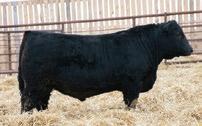
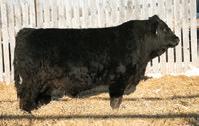
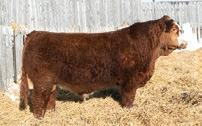

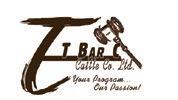

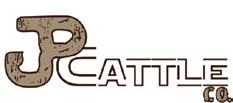




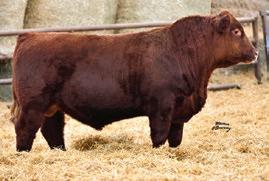
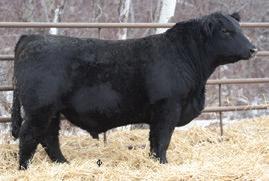
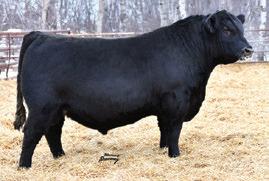


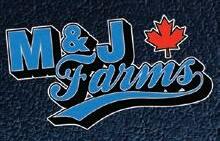













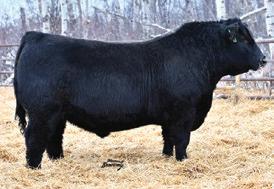
11 CATTLE COUNTRY February 2023 www.mbbeef.ca 1-800-990-1390 Fisher Branch, MB PAUL GREGORY P.Ag JAMIE PACKULAK B.Sc. Agriculture, Agronomy PRODUCTION | MARKETING | RESEARCH & DEVELOPMENT Pasture and Hay Blends | Custom Blending Delivery Available Producing high quality seeds to the most demanding specifications in the industry. Grasses | Legumes | Native Species Unparalleled expertise in the production of alfalfa seed. SimmentalAnnual & Angus Bull & Female Sale March 2, 2023 On the Farm mcauley, manitOba View the catalogue online at www.BuyAgro.com SALE MANAGED BY T Bar C Cattle Co. Ltd. info@tbarc.com | www.buyagro.com Chris Poley: 306-220-5006 Shane Michelson: 403-363-9973 Ben Wright: 519-374-3335 SELLING SIMMENTAL & ANGUS BULLS PLUS COMMERCIAL BRED HEIFERS Glenn & Barry Lowes Eric & Melissa Pateman McAuley, MB Glen: 204-851-5669 | Barry: 204-851-0342 Eric: 306-434-8567 brookecanart@gmail.com mmwilson87@hotmail.com www.jpcattle.com Watch & Bid Online Miles & Bonnie Glasman Jared & Chelsey Glasman Russell, MB Home: 204.773.3279 Miles’ Cell: 204.773.6275 Jared’s Cell: 204.796.0999 mjsimmentalangus@gmail.com www.mjsimmentalangus.com Matthew & Leanne Glasman Russell, MB Home: 204.773.3209 Matt’s Cell: 204.773.6055 mlg@glasmanfarms.com www.glasmanfarms.com Sale Managed By: T Bar C Cattle Co. Ltd. Chris: 306.220.5006 Coming Two Year Old Bulls 50 BULL SALE Sunday, February 26, 2023 find us on: Black and Red Simmental, Angus and Simm-Angus Bulls Watch & Bid Online www.mjsimmentalangus.com | www.glasmanfarms.com
Expanding Smart Farm Capacity in Manitoba

































































































































































 DR. MARY-JANE ORR, MBFI GENERAL MANAGER
DR. MARY-JANE ORR, MBFI GENERAL MANAGER

















Smart farming is a growing concept expanding on the technology developments of precision agriculture applications including remote sensing field mapping, auto-steer, and variable rate crop inputs. A Smart Farm in principle refers to making farm management decisions using integrated technologies such as Internet of Things (IoT), artificial intelligence (AI), robotics, and variety of real-time sensors with the goal of optimizing production efficiencies and lowering labour requirements.


Components of a Smart Farm can be broadly grouped as either sensors, internet connectivity tools, soft ware platforms, location tracking, robotics, or data analytics. The concept of IoT is to transmit data from remotely placed sensors to connect with the internet. Creative solutions are rapidly being developed to increase connectivity through cellular, satellite, Wi-Fi, or low-power wide-area network (LPWAN) With internet connectivity, the data from the sensors is processed through soft ware platforms to automate processes or generate meaningful data for farmers to make management decisions.

Smart Farms provide on-farm demonstration to showcase how new technologies can be integrated into agricultural production. Creation of specialized sensors can address a broad range of challenges in agricultural production. For example, in beef cattle production sensors can be put in place to signal frozen winter waterers, low summer water levels, or monitor individual animal health and reproductive status. Th rough farm scale validation of commercially available products or testing of newly developed solutions, Smart Farms can inform the return on investment and provide hands-on learning opportunities. Targeted evaluation provides unbiased third-party assessment of available technology solutions.
At Manitoba Beef & Forage Initiatives (MBFI) significant investment has been made in livestock and crop monitoring equipment through the Canadian







Agricultural Partnership five-year grant. The capital grant funding has been leveraged into several applied research and demonstration projects. Specifically, for creating and expanding connectivity across the MBFI farm stations, we are excited to be collaborating with Assiniboine Community College Communications Engineering Technology (CET) program. In the winter term of 2021-2022 CET students Ryan Kopytko and Mike Goertzen completed Capstone applied research projects with instructor Grant Nicol to design IoT and Wi-Fi access points across both MBFI farm stations and First Street Pasture. Additional project details are shared in The Assiniboine Effect Fall 2022 Alumni Magazine.
Some additional examples of Smart Farm solutions in use at MBFI include, SmartFeed Pro trailers, Moonsyst Smart Rumen Bolus, Onecup AI cameras, Allflex SenseHub ear tags, FarmSimple Herd Hand, GPS ear tags, weather stations, pasture cameras, and crop –livestock databases.
Building on our early successes, MBFI is thrilled to join the Pan-Canadian Smart Farm Network led by Olds College (Olds, Alberta). The network was launched in 2021 with funding from the Canadian Agri-Food Automation and Intelligence Network. Additional members include Glacier FarmMedia Discovery Farm, Lakeland College, and University of Saskatchewan Livestock and Forage Centre of Excellence. The network is committed to sharing expertise and data generated across the network to lower barriers for farmers and industry to adopt or develop technology solutions. MBFI is keen to learn from member experiences, participate in the collaborative framework, and share our Manitoba beef and forage producer focused perspective.





For more information on how MBFI makes use of agricultural technologies or to start a conversation please email MBFI at information@mbfi.ca or call at 204-761-3300.














































12 CATTLE COUNTRY February 2023 www.mbbeef.ca
STOP IN FOR A TOUR OF THE BULL PEN DARREN 204-768-4515 JOHN 204-302-0687 SHILOH 204-768-0321 BOX 1, STEEP ROCK, MB R0C 2Y0 SCX 8J Polled • 82 lb BW • -1.3 BW • 68.07 %LMY MAIN Sedona 1G x Cedarlea Maserati 1E SCX 12J 3rd Gen Pld • 98 lb BW • 816 lb WW • Top 2% WW & 1% YW MAIN Eldorado 45G x SCR Triumph 2135 SCX 204J 92 lb BW • 883 lb WW • 1522 lb YW • -1.1 BW • Top 4% YW MAIN Eldorado 45G x SCX Triumph 2135 SCX 143J 4th Gen Pld • 105 lb BW • 1379 lb YW • Top 4% YW • 19.18 REA MAIN Eldorado 45G x SCX Triumph 22B SCX 184J 4th Gen Pld • 102 lb BW • 873 lb WW • 1418 lb YW • 17.85 REA MAIN Eldorado 45G x Harvie Trigger 15Y SCX 72J Dbl Pld • 86 lb BW • 1379 lb YW • Top 2% WW & 1% YW 4.2 Marbling • 68.08 %LMY MAIN Eldorado 45G x KCM Stetson 175Y GENETICS THAT BENEFIT THE COMMERCIAL CATTLEMEN 60 coming two-year olds sell Saturday February 25, 2023 Ashern (MB) Auction Mart
(Source NDSU AE1999, Dec. 2021)







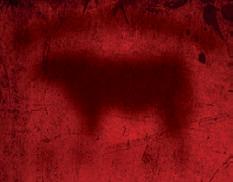


















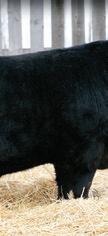


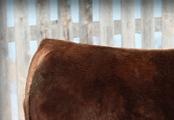

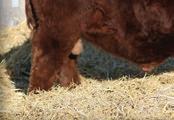



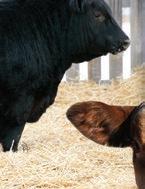







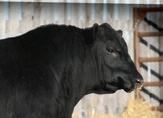

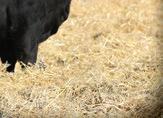
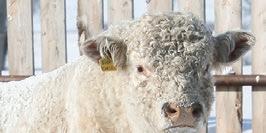





13 CATTLE COUNTRY February 2023 www.mbbeef.ca 50 RUGGED 2 YEAR OLD BLACK & RED ANGUS BULLS +4 FLECKANGUS BULLS www.ediecreekangus.com (204)232-1620 STEFAN (204)471-4696 JONATHAN AT EDIE CREEK ANGUS profit maternal genetics that are proven environment & management practices based on maximizing per acre of we are focused on BREEDING to fit a low-input grass MARCH 11 2023 ASHERN, MANITOBA MODERATE MATERNAL EASY CALVING EASY FLESHING EDIE CREEK GREAT ONE 77F CALVO RED GRAZER 8E Featuring 20 ECA Born & Raised Bred Heifers MCRAE LAND & LIVESTOCK Brett & Chantel McRae 204-729-1018 ANGUS VALLEY FARMS - Bruce McRae 204-242-4502 MC-THREE FARMS - Tyson McRae 204-726-3205 8TH 2023 March VIEW CATALOGUE & VIDEOS ONLINE AT WWW.MARMACFARMS.NET BLACK ANGUS FEATURING YEARLING AND TWO YEAR OLD BULLS Power & Calving Ease Bulls WE INVITE YOU TO TOUR THE BULLS ANYTIME & JOIN US AT THE FARM SALE DAY MAR MAC FARMS BLAIR, LOIS & MELISSA MCRAE BLAIR 204-729-5439 | LOIS 204-573-5192 RED ANGUS BULL SALE BLACK ANGUS Red & Black Angus & Simmental SIMMENTAL Jeff & Jackie Cavers Box 237, La Riviere, MB R0G 1A0 C: 204-242-4448 c2charolaisjeff@gmail.com www.C2charolais.com Annual Bull Sale March 29, 2023 On The Farm La Rivière, MB - 1:00 PM 45 CHAROLAIS BULLS SELL T Bar C Cattle Co. Ltd. 306-220-5006 View the catalogue online at WWW.BUYAGRO.COM SALE MANAGEMENT C2-Charolais on facebook Did you know? MBP distributes a free, weekly ENewsletter to members and partners on timely beef topics. Subscribe Today! mbbeef.ca/news/ Half-page and full-page advertising opportunities also available. Contact Jennifer for more information. 1-800-772-0458 CATTLE COUNTRY Advertise with usAds in Cattle Country get noticed! If your target audience is beef producers, Cattle Country is the place to advertise your goods, services and events!
Vaccination for Calf Pneumonia Prevention







 BY: DR. TANYA ANDERSON
BY: DR. TANYA ANDERSON





Earlier this month, I saw a report that poliovirus had been reported in a wastewater system in the northeastern USA. I had mistakenly believed that polio had been eradicated by the widespread use of the polio vaccine fi rst invented by Dr. Salk in 1955. In 1994, polio was considered eliminated in both North and South
kids get primer vaccines at 2,4,6, 12 and 18 months of age, our calves should be vaccinated at 6-8 weeks of age and then pre-weaning with additional vaccines given throughout the development period post-weaning depending on management plans - for grassing, breeding or backgrounding/fi nishing.
Remember that the calf environment also plays a big part of disease management. Winter cows separately
your geographical location, facilities may range from open range to more intensive operations - none are right or wrong, but each must be well-suited to the operation. Th ink of your cow/calf operation as one part of the big picture. Do your part to keep your herd healthy and protected from disease so that your calves are ready to enter the next production stage in the feedlot or breeding herd. Reduce your reliance on drugs and remember

Disease prevention starts before birth. Implement a four-way viral vaccination of your cowherd to enhance colostral immunity and to prevent reproductive disease from both IBR and BVD.
America. Today, only two countries remain polio-endemic, Afghanistan and Pakistan. And, within the last 30 years, the only polio cases in Canada were non-vaccinated residents who had contact with polio-infected visitors from another country.

I write about polio because it is an example of a preventable disease that is now resurfacing due to a personal choice to not get vaccinated. While most people that get infected will show no symptoms, 1 in 4 will show flu-like symptoms and a small proportion will develop the symptoms that we associate with polio - meningitis and paralysis. Symptom severity varies with the strain of virus. Is the choice one makes due to risk management - low odds of developing severe debilitating disease versus the even lower odds of having an adverse vaccine reaction? What if we needed to pay for our care of a “preventable” disease for which we chose not to protect ourselves?
Is the choice to not vaccinate your cattle herd due to perceived risk management? I believe it is for many. The decision to vaccinate or not is driven by a balance of labor availability, facilities, and projected return on investment. Why is it that many blackleg outbreaks happen to those that have had previous blackleg outbreaks? The vaccine is not cost-prohibitive, but facilities and lack of help or time are often cited as the excuse as the realization of lost income sets in. A gamble gone wrong.
Pneumonia in young calves is the same but a much riskier gamble - nearly guaranteed to happen but just when it will happen and what the impact to your pocketbook will be is the unknown - pre-turnout, on pasture or post-weaning? BRD (Bovine Respiratory Disease) is the leading cause of death for nursing beef calves older than three days of age. The causes are both viral (IBR, PI3, BRSV, BVD) and bacterial (M. hemolytica, P. multocida, H. somnus). A 2020 study determined the average immediate cost of treating pneumonia in young calves was $42.15. Additionally, further losses occur with reduced feed efficiency and ADG in the feedlot or decreased reproductive performance and lifetime milk production in the breeding herd. Heifers that develop pneumonia in their fi rst year of life are at a much higher risk of developing pneumonia as a mature cow. Calves that do not get enough colostral immunity are 12.5 times more likely to die in the feedlot.


Disease prevention starts before birth. Implement a four-way viral vaccination of your cowherd to enhance colostral immunity and to prevent reproductive disease from both IBR and BVD. Maintain your cowherd in an ideal body condition (3.5/5) and ensure your ration is balanced - TDN of 60% and protein of 9% for late gestation and then bumped to 65% and 11% respectively post-calving. And don’t forget about vitamin and mineral supplementation. Th in and overweight cows cannot produce the volume or quality of colostrum as compared to a cow in ideal body condition. Under and over-conditioned cows are also at higher risk for infertility, calving difficulty and mismothering.
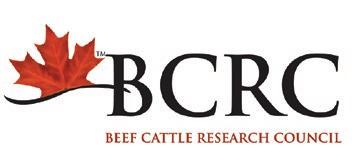
Ensure calves receive colostrum ASAP after birth. A minimum of 2L within the fi rst few hours and a repeat feeding four to six hours later. Supplement calves that have had a difficult birth and provide pain medication to “get them going.”
If you are having pneumonia issues in your calves pre-weaning, implement a calf hood vaccine program starting at birth. Intra-nasal vaccines are available to enhance immunity in the face of colostral interference - discuss with your veterinarian which options are best suited to your situation. Colostral immunity starts to wear off by 8 weeks of age depending on the disease organism so vaccination should be done pre-pasture turnout. Th ink of this vaccine as a primer for the vaccines given upon arrival in the feedlot, just as your













from the calving grounds and ensure adequate bedding and shelter from the elements so that calves keep clean and stay dry and warm. Depending on the season and









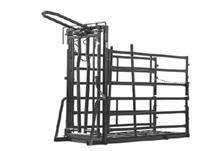

that disease management involves a combination of nutrition, environmental management and vaccination. Omit one part and everything else falls apart.

14 CATTLE COUNTRY February 2023 www.mbbeef.ca
& innovation
GATEWAY TO TOOLS & RESOURCES LEARN MORE Trimming Chutes Calf Tipping Chutes Calving Enclosures 1-800-661-7002 www.hi-hog.com Hi-Hog provides Free design assistance for your Calving Barn and Corral set-up. Available at your Manitoba Co-op Agro Centre Plan Ahead For Calving Season
The latest Canadian beef & forage research
YOUR
HIGH QUALITY BULLS from Reputable Breeders

MARCH 18 Pleasant Dawn Charolais Bull Sale, at the farm, Oak Lake, MB
MARCH 21 Diamond W Charolais, Red & Black Angus Bull Sale, JTM Livestock, Minitonas, MB
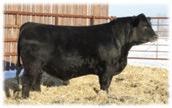



MARCH 22 HTA Charolais & Guest Bull Sale, at the farm, Rivers, MB
MARCH 28 Prairie Distinction Charolais Bull Sale, Beautiful Plains Ag, Neepawa, MB
APRIL 2 Stephen Charolais & Guests Bull Sale, Whitewood (SK) Auction Mart


APRIL 6 Hunter Charolais Bull Sale, at the farm, Roblin, MB
APRIL 13 White Meadow Charolais Online Bull Sale, Pipestone, MB
For more information contact: 306.584.7937
Helge By 306.536.4261

Help Protect Cattle and Wildlife


Winter conditions have arrived. If you haven’t already done so, take steps to protect your stored forage and silage from wildlife damage before additional snow and colder weather makes this more challenging. When deer and elk can access hay or silage bales, you lose valuable livestock feed and encourage the transmission of diseases such as chronic wasting disease and tuberculosis.
Protect your forage, cattle, and wildlife:
• Plan and construct wildlife exclusion barriers around bale storage areas; these can be temporary or (preferably) permanent.
Bring bales to permanent fenced stack yards as soon as possible and be sure to close the gate.
• For temporary protection, place a row of double stacked straw bales around the stored hay or silage.

• Use temporary electric fencing to protect bale stacks by inserting fiberglass posts horizontally into the bales to hold three, or preferably five, alternating hot and grounded wires; ensuring the top and bottom wires are hot.



Clean up any spilled hay, silage, or grain when found.
Preventing damage before it occurs will ensure your feed supply and help protect the health of both your livestock and wildlife.
For more information about damage prevention, please visit Agricultural Interactions at manitoba.ca/human-wildlife.
Denbie Ranch

• GRASSFED: “True North Foods is partnered with A&W Canada to supply Canadian grassfed beef for A&W’s grassfed burger program.


• SERVICES: Whether you are a specialty producer looking to get your product to a speci c market or distributor, or if you are producing commodity livestock for sale, we can partner with you. From our multi-species capabilities to our ability to handle smaller volumes, we o er excellent capabilities for producers in the Canadian Prairies to maximize their pro tability.

• FACILITY: We have a state-of-the-art facility to allow us to reach markets across Canada, the USA, and beyond. We understand producer’s needs, their care for their animals, and their honest, straightforward nature. Call us to hear how we can work together to get your product to market.
www.truenorthfoods.ca | trever.frattinger


15 CATTLE COUNTRY February 2023 www.mbbeef.ca
@truenorthfoods.ca | 306-536-6193
Manitoba Agriculture - Primary Agriculture Hay Bale Ad Cattle Country 1/4 page – 6.39” wide x 5.75” deep Issue date: Thurs. December 1, 2022
124 Shannon Rd, Regina, SK S4S 5B1
Catalogues and Videos available online a month prior to the sale at www.bylivestock.com Bar J Jack & Justin Robertson 2246 3086 8 Bull s Bulls Denbie Ranch Denis & Debbie Guillas 204 -447-2473 cell 204- 447-7608 18 Two Year Old and 4 Long Yearling Red Angus and 14 Angus X Simmental Hybrid Bulls Two Year Old Hybrid Yearling Charolais Two Year Old Hybrid Two Year Old Charolais Sale Day Online Bidding with DLMS View catalogue and videos at DLMS-CATTLEVIDS @ Ste. Rose Auction Mart 2:00 PM Ste. Rose, MB Bar J Jack & Justin Robertson k 204-843-2246 n 204-871-3086 Charolais Bulls immental Bulls Denbie Ranch & Guests Bull Sale Denbie Ranch Denis & Debbie Guillas 204-447-2473 cell 204-447-7608 18 Two Year Old and 4 Long Yearling Red Angus and 14 Angus X Simmental Hybrid Bulls Myhre Land a d C ttl Hans Myhre 15 Coming T Charolais Bu Visitors Welcome Anytime! Email denbie@xplornet.ca We’ve Got You Covered! Great Selection Of 4 Breeds ! Two Year Old Hybrid Two Year Old Red Angus Two Year Old Hybrid Two Year Old Charolais View catalogue @ srauction.ca and denbie ranch Facebook CATTLEVIDS BASKM Land Brad & Matth G Brad Ginter Matthew Gin 8 Two Year O Bulls Two Year Old Black Angus Saturday, February 18, 2023 @ Ste. Rose Auction Mart 2:00 PM Ste. Rose, MB Bar J Jack & Justin Robertson Jack 204-843-2246 Justin 204-871-3086 8 Yearling Charolais Bulls 2 Simmental Bulls Denbie Ranch & Guests Bull Sale Denbie Ranch Denis & Debbie Guillas 204 -447-2473 cell 204-447-7608 18 Tw ng Yearling Red Angus Simmental Hybrid Bulls Myhre Land and Ca Hans Myhre cell 204-648-6416 15 Coming Two Ye Charolais Bulls Visitors Welcome Anytime! Email denbie@xplornet.ca We’ve Got You Covered! Great Selection Of 4 Breeds ! Two Year Old Hybrid Yearling Charolais Two Year Old Red Angus Two Year Old Hybrid Two Year Old Charolais View catalogue @ srauction.ca and denbie ranch Facebook Sale Day Online Bidding with DLMS View catalogue and videos at DLMS-CATTLEVIDS BASKM Land & Cat Brad & Matthew Ginter Brad Ginter 204-212-2214 Matthew Ginter 306-452-5312 8 Twwo Year Old Black Angus Bulls Two Year Old Black Angus Saturday, February 18, 2023 @ Ste. Rose Auction Mart 2:00 PM Ste. Rose, MB J 46 086 l ll D b R h Den s & Debb e Gui las 204-447-2473 cel 204-447-7608 18 Two Year O d and 4 Long Year ing Red Angus and 14 Angus X S mmenta Hybr d Bu ls Two Year Old Hybrid Two Year Old Red Angus Two Year Old Hybrid Two Year Old Charolais Two Year Old Black Angus Saturday, February 18, 2023 @ Ste. Rose Auction Mart 2:00 PM Ste. Rose, MB Bar J t 2246 3086 Bulls B l
charolaisbanner@gmail.com
& Guests Bull Sale Denbie Ranch Den s & Debb e Guillas 204-447-2473 ce l 204-447-7608 18 T Y Old d 4 L g Y l g R d A g and 14 Angus X Simmenta Hybrid Bu ls Myhre L d d C ttl Hans 15 C Char Visitors Welcome Anytime! Email denbie@xplornet.ca We’ve Got You Covered! Great Selection Of 4 Breeds ! Two Year Old Hybrid Two Year Old Red Angus Two Year Old Hybrid Two Year Old Charolais View catalogue @ srauction.ca and denbie ranch Facebook Sale Day Online Bidding with DLMS View catalogue and videos at DLMS-CATTLEVIDS BASK Brad Brad Ginter 204 212 2214 M tth Gi t 306-452-5312 8 Two Year Old Black Angus Bul s Two Year Old Black Angus Saturday, February 18, 2023 @ Ste. Rose Auction Mart 2:00 PM Ste. Rose, MB Bar J b t 43-2246 71-3086 ais Bul s al B l s
& Guests Bull Sale Denbie Ranch Denis & Debb e Guil as 204-447-2473 ce l 204-447-7608 18 Two Year O d and 4 Long Yearling Red Angus and 14 Angus X Simmenta Hybrid Bu ls My Ha 15 Ch Visitors Welcome Anytime! Email denbie@xplornet.ca We’ve Got You Covered! Great Selection Of 4 Breeds ! Two Year Old Hybrid Two Year Old Hybrid Two Year Old Charolais View catalogue @ srauction.ca and denbie ranch Facebook Sale Day Online Bidding with DLMS View catalogue and videos at DLMS-CATTLEVIDS BA Br Br Matthew Ginter 306-452-5312 8 Two Year Old Black Angus Bul s Two Year Old Black Angus Saturday, February 18, 2023 @ Ste. Rose Auction Mart 2:00 PM Ste. Rose, MB Bar J Jack & Justin Robertson Jack 204-843-2246 Just n 204-871-3086 8 Yearl ng Charola s B ls 2 Simmental Bul s Denb e Ranch Denis & Debbie Guillas 204-447-2473 cell 204-447-7608 18 Two Year Old and 4 Long Yearling Red Angus and 14 Angus X Simmental Hybrid Bulls Myhre Land and Cattle Hans Myhre cell 204-648-6416 15 Coming Two Year O d Charo ais Bulls Two Year Old Hybrid Yearling Charolais Two Year Old Red Angus Two Year Old Hybrid Two Year Old Charolais Sale Day Online Bidding with DLMS View catalogue and videos at DLMS-CATTLEVIDS BASKM Land & Cattle Inc B ad & Mattthe Gi te Brad Ginter 204-212-2214 Matthew Ginter 306-452-5312 8 Tw Two Year Old Black Angus Saturday, February 18, 2023 @ Ste. Rose Auction Mart 2:00 PM Ste. Rose, MB Bar J Jack & Just n Robertson Jack 204-843-2246 Justin 204-871-3086 8 Yearling Charo a s Bulls 2 S mmental Bu ls Denbie Ranch Den s & Debbie Gui las 204-447-2473 cell 204-447-7608 18 Two Year O d and 4 Long Yearl ng Red Angus and 14 Angus X Simmental Hybrid Bul s Myhre Land and Cattle Hans Myhre ce l 204-648-6416 15 Coming Two Year Old Charo a s Bulls Two Year Old Hybrid Yearling Charolais Two Year Old Red Angus Two Year Old Hybrid Two Year Old Charolais Sale Day Online Bidding with DLMS View catalogue and videos at DLMS-CATTLEVIDS BASKM Land & Cattle Inc Brad & Matthew G nter Brad Ginter 204-212-2214 Matthew Ginter 306-452-5312 8 Two Year Old Black Angus Bul s Two Year Old Black Angus Saturday, February 18, 2023 @ Ste. Rose Auction Mart 2:00 PM Ste. Rose, MB Bar J Jack & Justin Robertson Jack 204-843-2246 Just n 204-871-3086 8 Yearl ng Charolais Bulls 2 Si t l B l Denb e Ranch Den s & Debbie Guil as 204-447-2473 ce l 204-447-7608 18 Two Year Old and 4 Long Yearling Red Angus and 14 Angus X S mmental Hybrid Bul s Myhre Land and Cattle Hans Myhre ce l 204-648-6416 15 C i g T Y O d Charo a s Bulls Two Year Old Hybrid Yearling Charolais Two Year Old Red Angus Two Year Old Hybrid Two Year Old Charolais Sale Day Online Bidding with DLMS View catalogue and videos at DLMS-CATTLEVIDS BASKM Land & Catt e Inc Brad & Matthew Ginter Brad Ginter 204-212-2214 Matthew Ginter 306-452-5312 8 Two Year O d Black Angus Bul s Two Year Old Black Angus Saturday, February 18, 2023 @ Ste. Rose Auction Mart 2:00 PM Ste. Rose, MB B J Jack & Justin Robertson Jack 204-843-2246 J t 204-871-3086 8 Yearl ng Charo a s Bulls 2 Simmental Bu ls Denb e Ranch Denis & Debbie Gu llas 204-447-2473 ce l 204-447-7608 18 Two Year Old and 4 Long Yearling Red Angus d 14 A g X Si t l Hyb id B l Two Year Old Hybrid Yearling Charolais Two Year Old Hybrid Two Year Old Charolais Sale Day Online Bidding with DLMS View catalogue and videos at DLMS-CATTLEVIDS lls 18, 2023 @ Ste. Rose Auction Mart 2:00 PM Ste. Rose, MB Bar J Jack & Justin Robertson J k 204-843-2246 Justin 204-871-3086 8 Yearling Charolais Bul s 2 Simmenta B lls D bi R h Denis & Debbie G il as 204-447-2473 cel 204-447-7608 18 Two Year Old and 4 Long Yearling Red Angus and 14 Angus X Simmental Hybr d Bu ls Myhre Land and Cattle Hans Myhre cell 204-648-6416 15 C i g T Y O d Charo a s B lls Two Year Old Hybrid Yearling Charolais Two Year Old Red Angus Two Year Old Hybrid Two Year Old Charolais Sale Day Online Bidding with DLMS View catalogue and videos at DLMS-CATTLEVIDS BASKM Laand B d & M tth Gi t Brad G nter 204-212-2214 Maatthew Ginter 306-452-5312 8 Two Year O d Black Angus Bulls Two Year Old Black Angus Saturday, February 18, 2023 @ Ste. Rose Auction Mart 2:00 PM Ste. Rose, MB Bar J Jack & Justin Robertson Jack 204-843-2246 Justin 204-871-3086 8 Yearling Charolais Bulls 2 Simmental Bulls Denbie Ranch Denis & Debbie Guillas 204-447-2473 cell 204-447-7608 18 Two Year Old and 4 Long Yearling Red Angus and 14 Angus X Simmental Hybrid Bulls Two Year Old Hybrid Yearling Charolais Two Year Old Hybrid Two Year Old Charolais Sale Day Online Bidding with DLMS View catalogue and videos at DLMS-CATTLEVIDS @ Ste. Rose Auction Mart 2:00 PM Ste. Rose, MB Bar J Jack & Justin Robertson Jack 204-843-2246 J ti 204-871-3086 8 Y li g Ch l i B l 2 Siimmenta Bulls Denbie Ranch Denis & Debbie Gu llas 204-447-2473 cell 204-447-7608 18 Two Year Old and 4 Long Yearling Red Angus and 14 Angus X Simmenta Hybrid Bu ls Cattle l 204-648-6416 Year O d Two Year Old Hybrid Yearling Charolais Red Angus Two Year Old Hybrid Two Year Old Charolais Sale Day Online Bidding with DLMS View catalogue and videos at DLMS-CATTLEVIDS Catt e Inc w Ginter 4-212-2214 306-452-5312 Black Angus Bu ls Old Black Angus February 18, 2023 @ Ste. Rose Auction Mart 2:00 PM Ste. Rose, MB Bar J Jack & Justin Robertson Jack 204-843-2246 Justin 204-871-3086 8 Yearling Charolais Bulls 2 Simmental Bulls Denbie Ranch Denis & Debbie Guillas 204 -447-2473 cell 204-447-7608 18 Two Year Old and 4 Long Yearling Red Angus and 14 Angus X Simmental Hybrid Bulls Myhre Land and Cattle Hans Myhre cell 204-648-6416 15 Coming Two Year Old Charolais Bulls Two Year Old Hybrid Yearling Charolais Two Year Old Red Angus Two Year Old Hybrid Two Year Old Charolais Sale Day Online Bidding with DLMS View catalogue and videos at DLMS-CATTLEVIDS BASKM Land & Cattle Inc Brad & Mattthew Ginter Brad Ginter 204-212-2214 Matthew Ginter 306-452-5312 8 Two Year Old Black Angus Bulls Two Year Old Black Angus Saturday, February 18, 2023 @ Ste. Rose Auction Mart 2:00 PM Ste. Rose, MB Bar J Jack & Justin Robertson Jack 204-843-2246 Justin 204-871-3086 8 Yearling Charolais Bulls 2 Simmental Bulls Denbie Ranch Denis & Debbie Guillas 204 -447-2473 cell 204-447-7608 18 Two Year Old and 4 Long Yearling Red Angus and 14 Angus X Simmental Hybrid Bulls Myhre Land and Cattle Hans Myhre cell 204-648-6416 15 Coming Two Year Old Charolais Bulls Two Year Old Hybrid Yearling Charolais Two Year Old Red Angus Two Year Old Hybrid Two Year Old Charolais Sale Day Online Bidding with DLMS catalogue and videos at DLMS-CATTLEVIDS BASKM Land & Cattle Inc Brad & Matthew Ginter Brad Ginter 204-212-2214 Matthew Ginter 306-452-5312 8 Two Year Old Black Angus Bulls Two Year Old Black Angus Saturday, February 18, 2023 @ Ste. Rose Auction Mart 2:00 PM Ste. Rose, MB Saturday, Feb 18th, 2023 @ 2pm, Ste. Rose Auction Mart @ManitobaBeef
Denbie Ranch
Manitoba Beef Producers ManitobaBeef
Meatballs: The Sixth Love Language
BY: ANNA BORYS, MBP FOOD EXPERT
Who doesn’t love a meatball? Some crowd favourites include meatballs slathered in a tangy BBQ sauce stuck with a toothpick as an appetizer. Or nestled atop a cloud of mashed potatoes covered in gravy and ruby red lingonberry sauce. Others prefer them coated in a sweet and sour sauce with peppers, onions, and pineapple on top of fluff y white basmati rice, or even the classic meatball, simmered in a marinara to be ladled over a plate of spaghetti…I have never met anyone who doesn’t enjoy those circular love bombs.
Back in the spring of 2022, Manitoba Beef Producers set up an outreach event hosted by Save-On-Foods where we showcased this meatball recipe. As dozens of people stopped by our booth, some highlights included a quick
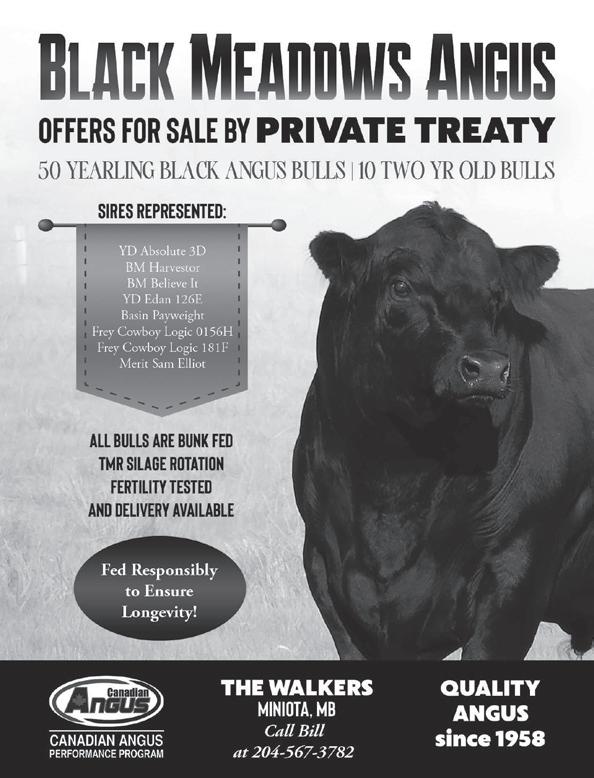
selfie with Blue Bombers quarterback Zach Collaros, hanging out with MBP District 9 board member, Trevor Sund and his daughter while learning more about their farming operation, and meeting a woman who tried a meatball and then proceeded to scurry around the entire store, fi lling her cart with all the ingredients listed on the recipe so she could make them for her family that night. Yes, they are THAT good.
Meatballs are a very versatile meal option. Th is recipe can be packaged and frozen with rice as a ready-toeat frozen lunch option for the microwave at work. They are also great as an appetizer or potluck option but they are also perfect for a weeknight meal as they’re ready in no time. It also introduces a couple of fun ingredients in kimchi and gochujang.
Kimchi is the equivalent to a Korean sauerkraut.
Because of its fermentation step, it becomes a very great ingredient to promote gut health. It adds a nice depth to the meatballs, but also can be served as a side dish, or garnish for many other meals. Try serving it with rice and topping with a fried egg or mixing it into some cream cheese for a Korean inspired dip! Gochujang is a fermented red chili pepper paste that brings a spicy kick and umami to both the meatball and the sauce as it is included in both components.
If you don’t already have this ingredient in your fridge, it will become a staple as soon as you try it. Other great uses are whisking it into some mayo as a burger or sandwich spread or even stirring a dollop into your ramen noodles to add a funky, spicy flare.
Enjoy!
Sweet and Spicy
Glazed Kimchi Meatballs


Appetizer or Entrée, Yields 24-28 Meatballs
Kimchi Meatballs
• 1/3 Cup Kimchi, chopped fi nely
• 1/3 Cup Kimchi, chopped fi nely
• 1 tsp Kosher Salt
• 2 tsp Fresh Ginger, fi nely minced
• 3-4 cloves – Garlic, fi nely minced
• ¼ Cup Green Onion, fi nely chopped
• ½ Cup Panko breadcrumbs
• 1 Egg
• ½ tsp Gochujang (Red Pepper Paste)
• ¼ tsp Black Pepper, ground

METHOD MEATBALLS:
• 1 lb Lean Ground Beef
Sweet and Spicy Glaze
• ¼ Cup – Soy Sauce
• ¾ Cup – Brown Sugar
• 1 tsp – Gochujang (Red Pepper Paste)

• ¼ Cup – Rice Vinegars

Garnish
• Slivered Green Onions
• Sesame Seeds, toasted
1. Kimchi Meatballs: Oven at 400°F. Add all ingredients except beef to a mixing bowl of a stand mixer with paddle attachment. Mix on medium speed for about 1 minute to allow breadcrumbs to hydrate and ingredients to combine thoroughly.
2. Add beef to bowl and mix for about 30-45 seconds on medium speed until ingredients are well combined.
3. Line a sheet pan with aluminum foil and then parchment over top. Using a small cookie scoop, portion meatballs out onto a parchment lined tray, just slightly smaller than a golf ball (about 2 Tbsp). Form round meatballs by rolling between palms. Place formed meatballs evenly on sheet pan.
4. Roast in oven for about 13-15 minutes until internal temperature reads 165°F.
METHOD GLAZE:
1. Add all ingredients to a small pot over medium heat. Whisk until sugar is fully dissolved. Bring mixture to a boil and turn heat to low. Continue to simmer until mixture thickens just slightly, whisking occasionally. (Optional Slurry: Whisk together 1 Tbsp corn starch and 3 Tbsp of water until corn starch has dissolved. Add slurry to pot with sauce and bring to a boil to thicken.)
2. Add cooked meatballs to a large pot and pour glaze over top. Turn heat up to medium low and toss meatballs in glaze. Allow glaze to thicken as it cooks while tossing meatballs. Continue to simmer until desirable thickness is reached, about 5 minutes.
3. Serve as an appetizer garnished with toasted sesame seeds and slivered green onions, or as an entrée with a side of white rice and steamed baby bok choy and broccoli.
16 CATTLE COUNTRY February 2023
www.mbbeef.ca


 BY: ANGELA LOVELL
BY: ANGELA LOVELL































 CARSON CALLUM General Manager’s Column
CARSON CALLUM General Manager’s Column









 Shawn Cabak Livestock Specialist -Beef Manitoba Agriculture
Shawn Cabak Livestock Specialist -Beef Manitoba Agriculture














































































































































 DR. MARY-JANE ORR, MBFI GENERAL MANAGER
DR. MARY-JANE ORR, MBFI GENERAL MANAGER
























































































 BY: DR. TANYA ANDERSON
BY: DR. TANYA ANDERSON









































